Table Of Contents
Tilers Place is reader-supported. When you buy through links on this tile page, I may earn an affiliate commission on qualifying purchases.
Grout – What Is It?
Everything You Need To Know About Tile Grout
Welcome to the only article you’ll ever need to read about tile grout, as told by a professional tile setter.
Learn what grout is, which one is best for you, the best tools for grout, and many handy tips that I’ve learned after 25 years of grouting tile.
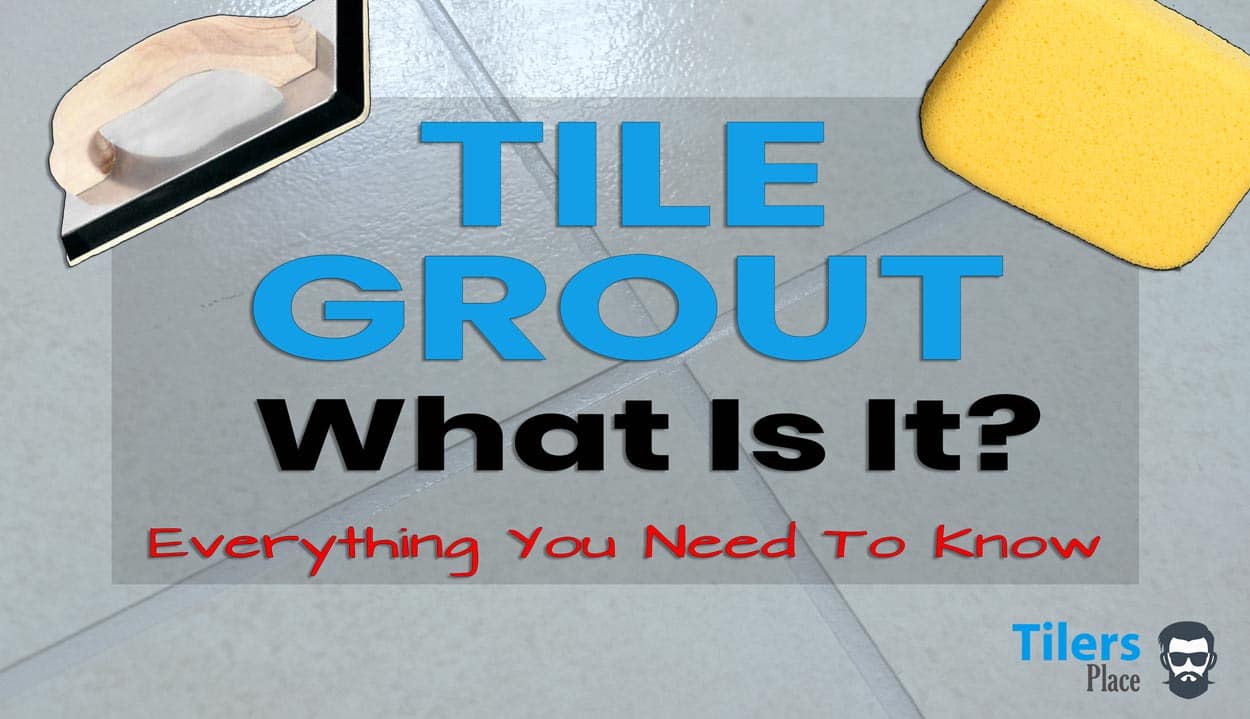
GROUT; noun
How To Say It: grau̇t
Tilersplace Definition of Grout – One of the most common tiling products. Colored mortar used to fill thin spaces between tile. It is stored as a dry powder and it’s mixed with water to produce a workable product. Grout comes in various types to suit all applications both indoors and outside. It is highly workable while “wet” and hardens to a stiff and vigorous cementitious compound. Color pigments are pre-mixed to suit all tile types and designs.
Layman’s Definition of Grout – Cement stuff with color that is used to fill the gaps in between tiles.
Homeowners Definition of Grout – The dirty lines between my tiles. Help me clean it.
If you have ever seen tiles, either on walls or the floors, then you have seen grout. Every single tile installation is never complete without grout.
Grout helps in these ways:
- Create the contrast that is essential in tiled surfaces
- Adds strength to the whole entire installation as it holds all the tile together, working alongside the thinset
- Adds much needed flexibility to the overall installation
It’s truly just as important as the tile itself.
Basically, tiles + grout = a tiled surface.
What Is Grout? – Tile Grout 101
In its essence, grout is Portland cement mixed with smaller aggregate material like silica sand that helps it bond together. Clean water is then added to activate it. When I started tile setting, this was the only grout you could buy and I actually made it myself from those two components. If I wanted a colored grout, I would add color oxides and presto: I had grout.
This type of grout tended to be extremely gritty and porous and was only suitable for floor use.
You could use it on wall tile but it didn’t stick well and looked downright ugly. This type of grout is traditionally called sanded grout.
Nowadays, this grout is very rarely used, sometimes it can be used for quarry tile installations otherwise it is avoided.
Sanded Grout – What Is It?
Sanded grout is the Joe Everyman of the tile grout world, the most commonly used and basic form of grout out there. It also the easiest to use and most forgiving of grout types, as you can easily wash away most mistakes.
It’s exactly what I described above, a basic sand and cement mix with some color pigment mixed in to produce a basic tile grout.
Commonly, a mix of polymers are added to help make the grout stronger and more resistant to common stains.
That being said, it is still a very simple grout. Color inconsistency is common with this tile grout as well.
An advantage of this makes it very hard wearing and resistant to the most vigorous of scrubbing.
The sand in the grout helps prevent shrinkage which allows it to be used in tile installations larger than 1/8th inch wide.
The largest problem with this type of grout is that it can scratch natural tile like marble, travertine and other forms of polished stones. The rough bits of sand in the grout can create surface scratches which are hard to remove during grouting.
This grout is also difficult to use in vertical installations as it isn’t inherently sticky and difficult to control with a grout float. To be fair, this grout should not be used on walls anyway, for that we have something called unsanded color Grout.
This tile grout is also one of the toughest grouts due to it’s high sand content, making it a real pain when removing with a grout removing tool.
When Do I Use It?
Sanded grout is perfect for grout gaps from ⅛” to 1½ in size.
Indoors & Outdoor Use ✔️
If you need a grout for larger grout gaps, here’s a tip from the Tile Council Of North America. Add sand to your sanded grout to create a “wide-joint” mix. This is popular with earthen tiles like Terra Cotta.
Generally, use sanded grout only on floor tiles as vertical grout gaps are more visible and the gritty texture is not pleasing for most people.
Sanded grout is also less sticky and makes grout wall tiles a pain – it will slide off the grout float and tiles, making it much tougher to stuff it into the grout lines.
Which Materials Is It Suitable For?
- Pavers
- Brick
- Porcelain (Not highly polished. Check prior to use for scratching)
- Ceramic tile
- Cultured marble (check prior to use for scratching)
- Slate
- Quarry
- Ceramic mosaics
- Dimensional stone
- Materials
- Structural glazed tile
- Granite
Limitations
Sanded grout has some limitations and you need to understand these before using it.
The biggest factors to remember are:
1. Grout joint size – Don’t use this tile grout on smaller gaps than 1/8”. It’s not designed to be so thin and may end up cracking due to not achieving full strength.
2. Tile Material – Polished porcelain and stone tiles may get scratched from the gritty sand used. These scratches will appear during grouting and cannot be removed easily. You’ll need a specialist to come out and refinish the surface with a number of different abrasive disks and polishes. It’s very expensive and some tile cannot be re-honed.
UnSanded Grout – What Is It?
Unsanded grout or “smooth wall grout” is what I would use on wall tile as it is very smooth and forms a uniform surface. Due to not having any sand in it, it is only suitable for smaller grout joints from 1/16th to 1/8th inches in size.
If used in larger gaps, the grout will crack due to shrinkage that occurs during curing. It can also loose adhesion to the tile and crumble out entirely over time.
Non-sanded grout is commonly used in ceramic and porcelain tile, glass tile and material that can be easily scratched like marble tile.
It lacks the harsh bits of sand that can scratch delicate surfaces during the grouting phase.
In installations that use these materials and require larger grout gaps, an epoxy grout can be used.
Unsanded grout is generally stickier than standard grout which makes it suitable for vertical applications like bathroom walls. It is very easy to apply in these conditions and doesn’t slide off the walls or grout float like the more sandy grout would.
This grout is available as a dry powder or a premixed solution and can be applied with traditional grouting tools.
It dries to a tough consistency but just like a sand grout, it is highly porous and susceptible to staining. A grout sealer should be applied to prevent any staining and mold growth.
When Do I Use It?
Unsanded grout is suitable for grout gaps ranging from 1/16th to 1/8th inches in size. Both wall and floor tiles are suitable to be grouted with this product.
Indoors & Outdoor Use ✔️
I use this type of grout on all my jobs now. Wide grout lines are very uncommon with most of my clients using large format porcelain tile and unsanded grout works beautifully. It’s a pleasure to use and creates a smooth and uniform finish.
Which Materials Is It Suitable For?
- Granite
- Glazed wall tile
- Glass + Mosaics
- Ceramic
- Marble
- Porcelain
Limitations
The main factor to remember is grout lines. Do not exceed 1/8” otherwise the grout may crack or crumble.
This is because it is lacking in coarse sand that will give it strength across large areas.
Modern Unsanded Grout
Moving away from that caveman era of homemade grouts and basic grouts, we now have many more kinds of grouts that are smooth and suited for all applications.
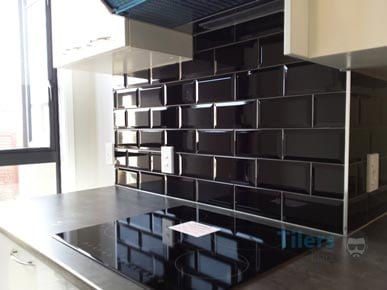
They are basically an unsanded grout however they are much smoother and more refined. This makes them suitable for both wall and floor installations and also deem them safe for use on most forms of tiles.
These grouts have become the norm for all professional tile setters and we use these grouts on a daily basis.
The wide range of colors and color uniformity help contribute to that trust.
These grouts are still based on Portland cement but the aggregate material is much more refined and barely visible in the mix.
In addition to those ingredients, additives are added like:
- water dispersing agents (hydrophobic material)
- fungicides
- color fast pigments
- synthetic resins
Are all added to the grout to make it a much smoother, stickier and paste like compound.
These in turn give the grout properties that have never been possible in old school grout. Grouting with a grout float is a pleasure as the it’s easy to control and sticks to the grout float without troubles. Cleaning off excess material with water is also much easier.
Modern Grout Advantages:
- UV Resistance
- Frost Proof
- Mold-Inhibiting
- Resistant to abrasion
- In-built Fungicides + bacteriostatic agents (prevents bacteria from reproducing.)
- Colorfastness.
Summary – What Is Grout?
In essence, grout is a cement mixed with sand. To make it a more resilient and visiually appealing product in modern homes and businesses, specialist chemicals have been added to the basic mix to create an even better product.
Of course, tile installations can vary widely and some need to match certain criteria like State or Council Hygeine regulations.
For those situations, we have a different grout. Introducing Epoxy Grout – The King Of Grouts.
Epoxy Grout – What Is It?
Epoxy grout is a multi-part grout that is mixed together to make a ready to use product. Generally there are two or three components that are mixed together.
One part is the grout compound itself and this is mixed with a thick liquid that acts as the water in a traditional grout mix.
Some grouts like Laticrete Spectralock Pro come with a third component that is a color pigment. You mix this to create the desired color, two pack epoxy grouts come pre-colored at the time of manufacteur.
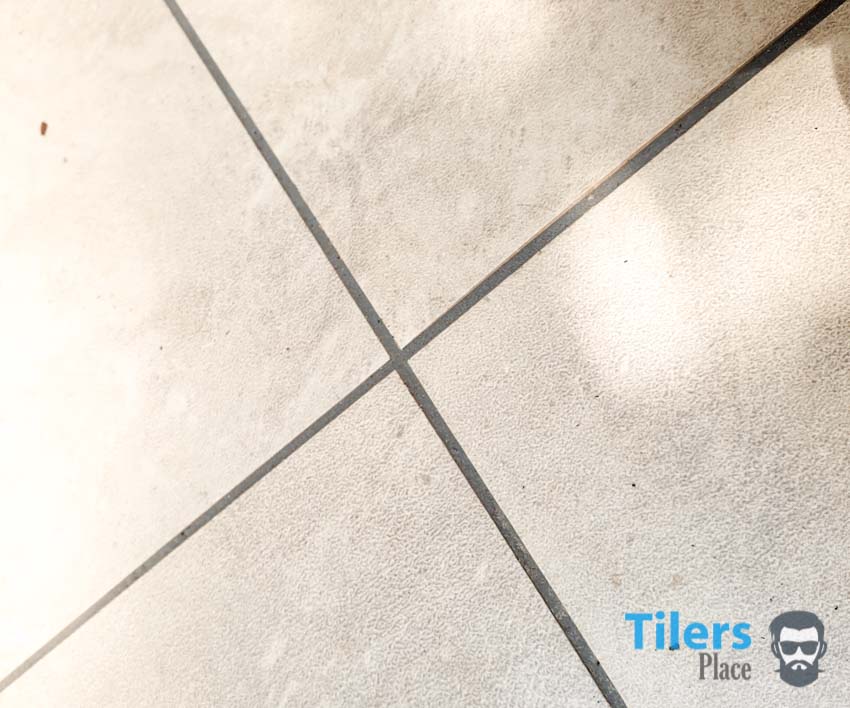
Due to it’s composition, epoxy grout is a very robust and strong grout.
It’s is nearly 100% waterproof, stain and yellowing proof and safe to use in all hygienic areas like bathrooms and showers.
Many professional tilers will insist on only grouting showers with epoxy due to the added level of strength, waterproofing and ease of use it’ll give to the client.
I have epoxy grout in my personal shower and I’d never have anything else.
It is also suitable for commercial applications where tough hygiene requirements are needed.
It won’t allow germs or mildew to enter the grout, making it very easy to clean and sterilize.
Facilities like commercial kitchens or restaurants and even hospitals can all greatly benefit from use of epoxy grout in their tiling installations.
What Is Epoxy Grout Made Of?
Epoxy grout is a real example of a chemical soup that is mixed into a few organic components.
The basic components of epoxy grout is a hardener, and an epoxy resin that contains refined silica fillers and color pigments.
Mixed together, they create a chemical reaction to results in a very tough and resistant compound that happens to look beautiful in-between tiles.
That’s all you’ll be able to find online about what Epoxy grout is made from as the manufacturers don’t share the exact chemical components required to make an epoxy grout. Not that we need to know anyway, as they’ll likely be a whole list of weird sounding chemicals like delta-3 carene, sabinene or beta-pinene. (All plant-based resins.)
You probably don’t know that epoxy grout can also be used as a tile adhesive. In tricky to adhere substrates like iron or fibreglass reinforced plastic (shower liners), an epoxy grout can be used safely. The bond it creates is simply incredible.
Where Should Epoxy Grout be Used?
Epoxy grout can basically be used anywhere that you want to create a tough and trouble-free environment with consistent grout color.
It can look like new for over a decade, require very little maintenance and dramatically increases the strength of any tiled installation. When used in a shower, it can greatly reduce the amount of mildew, mold and other hassles usually associated with grout in wet areas.
It is truly an outstanding product and provides the greatest amount of peace-of-mind and satisfaction when installed correctly. It’s available in a wide range of color types and even glitter can be mixed in.
So if it’s so great, why isn’t everyone using it?
There are a couple factors that need to be considered before using an epoxy grout and I’ll provide the dirt here.
It may be interesting to you.
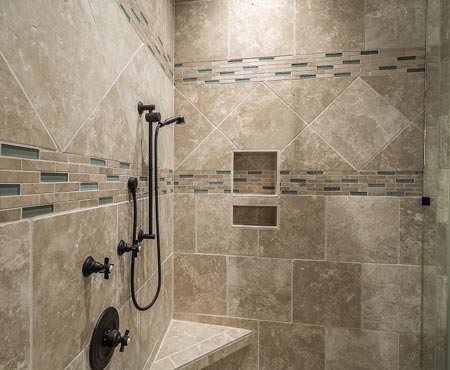
Epoxy Grout Considerations
- Cost
Epoxy grout is much more expensive in comparison to traditional grout. On average epoxy costs atleast 2-3 times more than standard grout. It is sold in small amounts and larger installations like a swimming pool can end up costing over $1000 in epoxy grout alone.
- Not Suitable For All Tiles
This one is quite an open subject but generally, I tend to avoid using epoxy grout on natural stone unless it’s thoroughly sealed beforehand. Even then, it should be spot checked to see if the natural stone absorbs anything because once that discoloration beneath the surface occurs, you can’t get it out.
- Difficulty to Use
Forget what the sugar coated DIY home blogs will tell you, epoxy grout is not easy to use. Especially if you are using it for the first time. It’s stiffer and more difficult to push in using a grout float and it sticks to tiles. An inexperienced user of epoxy grout can easily ruin a completed tile installation and the common remedy is a complete tear-out and do over.
Once epoxy grout dries, the only thing moving it – is an angle grinder.
Everything about epoxy grout is more difficult to use in comparison to standard grouts.
Starting with mixing the components, it’s recommended to use a spiral mixer attached to a power drill to ensure a complete mix and uniform color. A margin trowel can be used to mix the grout but due to the viscosity, it is not easy. A stiffer grout float is also needed.
Once the epoxy grout is mixed, it is a hand-grenade. At least I see it that way.
Epoxy grout sets very quickly and the longer you mess around, the more difficult it’ll be to push it into your grout gaps.
You will also be spending more time in your wash up phase, so you need to hustle to complete the grouting as quickly as you can.
Pro Tiler Tip
Never mixed the whole bucket of epoxy grout, use about a quarter of the components and mix them in a separate bucket. Use up that first, then make more.
Epoxy grout is also much more difficult to wash up and can leave a nasty haze on the tiles if not removed properly.
Read more about this in my best epoxy grout buyer’s guide. I equip you with all the tools to successfully grout with epoxy.
How Do I Choose Which Grout To Use Where?
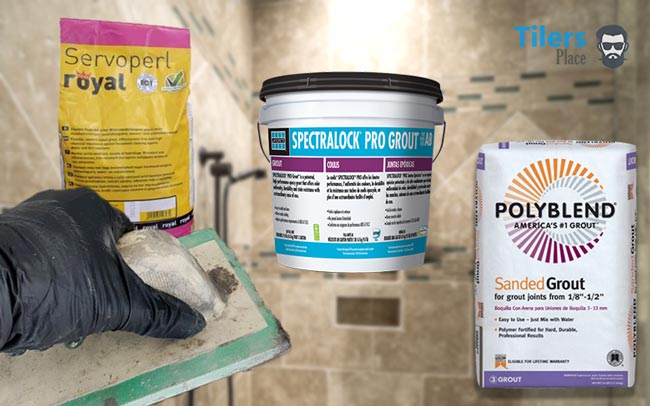
So now your brain is exploding with all this knowledge about grouts and what makes every type unique but you’re probably scratching your head about which products to actually use where.
Let’s try simplify it for you and explain sanded vs. unsanded grout.
Sanded Grout – Use on a ceramic tile floor in common areas or for grout lines over 1/8” in size. Porcelain can be grouted as well but be careful if it’s highly polished, some types may get scratched if it’s a less quality tile.
Non-Sanded Grout/Modern Grout – This grout can be used in virtually any situation: on walls and floors, both indoors and out. On polished tiles and gritty outdoors tiles. I use this type of grout in a vast majority of my professional tiling work and it’s outstanding. This Kiesel grout is a great example of a modern grout.
Epoxy Grout – Wet areas like showers or kitchens (back splashes, floor areas) subject to intensive cooking routines! Mosaic and other similar feature walls where you want it to be perfect.
Toilets or floor areas subject to pet leaving their deposits. Epoxy grout will prevent the ammonia in urine crystallizing in the grout and creating a stink that is impossible to remove. The smell hides way back in the underside of tile and can’t be reached with any cleaning methods or products.
All commercial applications that are subject to heavy traffic or require strict hygiene.
Still not sure which grout to use? Ask below in the comment section and I’ll tell you the best grout to use!
Best Tools For Grout
Now that you know all about grout and which one to use, let’s look at the tools you’ll require to work with this stuff.
The tools may look very simple, but the following four tools are what I use every day to grout in my client’s homes. They always got my back and I trust them. Together with your man (or lady) power, anything can be grouted with these simple tools!
Essential Tools You’ll Need To Grout
Grouting is mainly a hand tool kind of job – the tools are simple but make all the difference in helping you get a quality job on any floor or wall job.
The brand of the grouting tools is not overly important as they are mostly the same concept, just don’t go hunting for the cheapest tools as you do get what you pay for most of the time. Click on names of the various grouting tools if you want tools that give back more.
Grout F.A.Q
Can I Use Tile Glue As Grout?/Can I Grout Tile With Glue?
No, grouting tiles with tile glue is not a good idea.
Tile glue has added polymers and components that makes it unsuitable for use as grout. It also contains no color pigments, meaning it’ll either be grey or white depending on the thinset mortar type (glue.) No other color can be attained from mortar/thinset.
Glue is also very hard to smooth and work with during grouting. You’d need a lot of help during the tile grouting process. Carefully going back over what you grouted to get the tiles clean.
Furthermore, when glue is used as tile grout, it will slump in the tile gaps while it cures. Meaning the grout lines will look half empty and unfinished.
Can I Glue Tiles With Grout?/Can Grout Be Used As Thinset?
No, tile grout cannot be used to stick down or hold tiles or other material/tile products. Even though it looks like tile glue to the untrained eye, grout will never hold tiles for any extended period of time.
Grout lacks the neccassary polymers and additives that will help tiles to adhere to surfaces and will loose contact with the substrate quickly.
Tiles that get glued down with grout will fail and needed to be reinstalled.
One grout that can be used as a thinset however is epoxy grout. Epoxy grout can double as thinset material and help in difficult situations like pre-made acrylic shower pans. These shower pans require epoxy grout to be used as thinset as the additional components in the epoxy give it excellent adhereing properties lacking in traditional cement grout. Be sure to use a light color like light grey or white so the color dosen’t show through the back of your tile.
Grout – Conclusion
In this article, we answered the age-old question of what is grout and took a dive into all the forms of grout products that are available on the market today. Going way back to the first floor grout all the way towards modern grouts.
We learned that grout is mainly a mixture of cement, water, sand and colored pigments with modern grouts adding extra mold inhibitors and finer sands to produce a more robust and durable product.
Epoxy grout was also talked about in depth, with the common use cases and things to watch out for covered off as well. Things like faster setting time, difficulty in use and the need to use caution while handling it.
Lastly, we looked at what are the basic grouting tools needed to grout tiles and to achieve a quality job.
If you have any further questions about grout, like how to remove it, how to seal grout, or how to remove/prevent grout haze – you’ll find all the answers and help on my site. Simply go back up use the search box above to get all the answers you seek.
Hope you learned something today and most importantly – happy grouting!

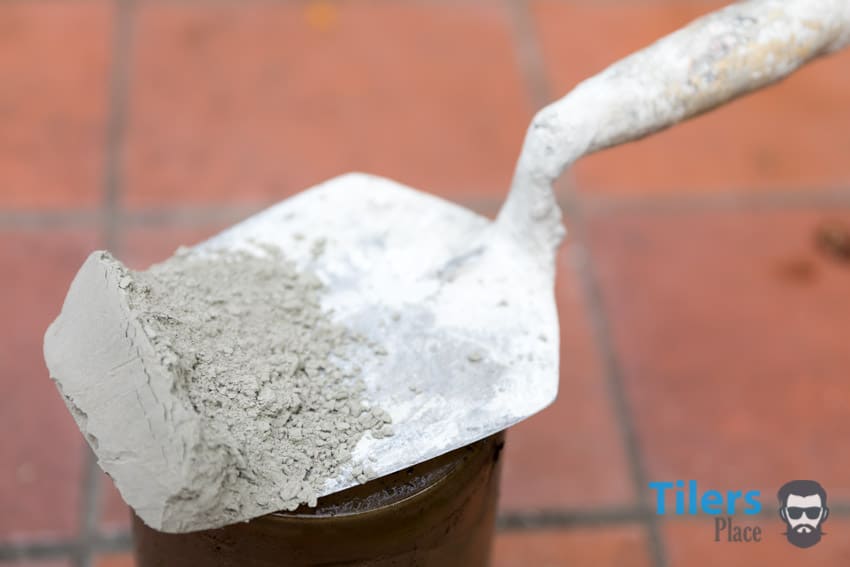
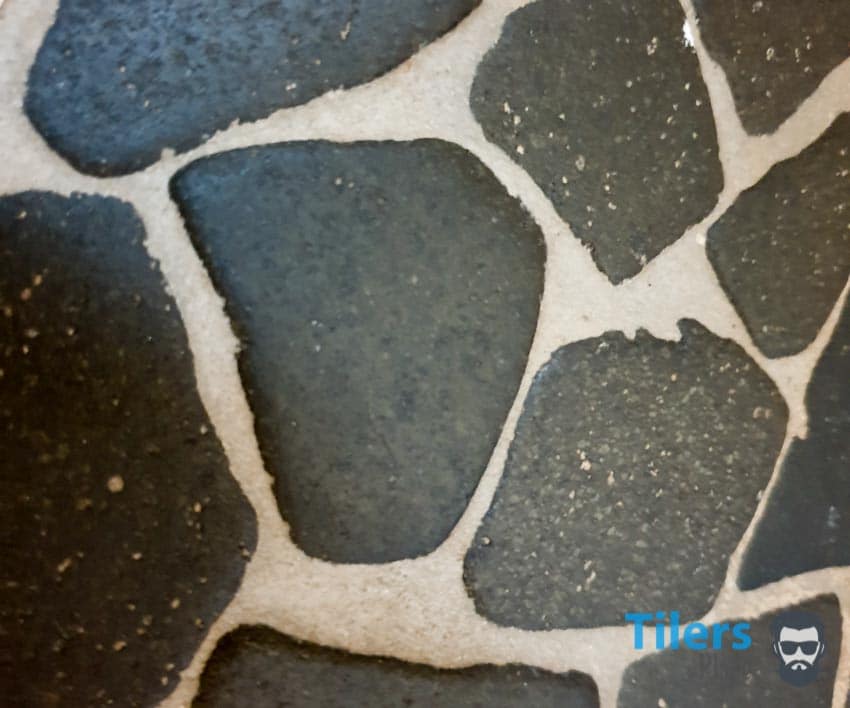
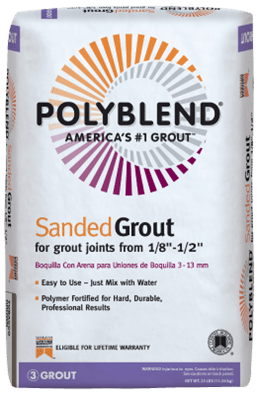
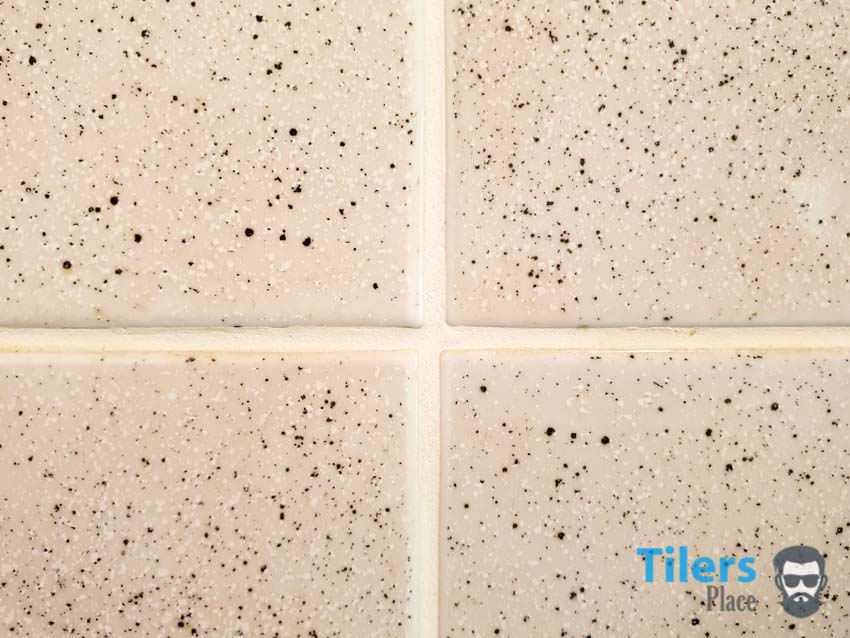
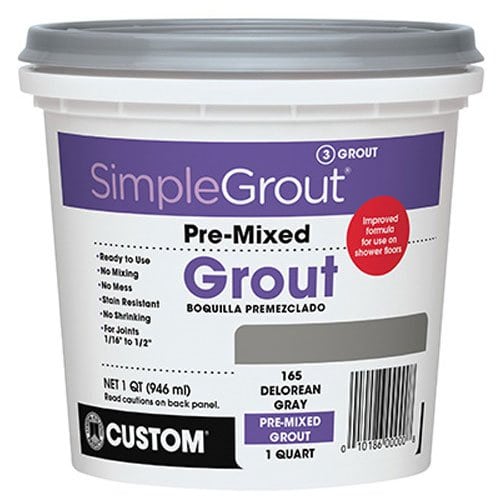
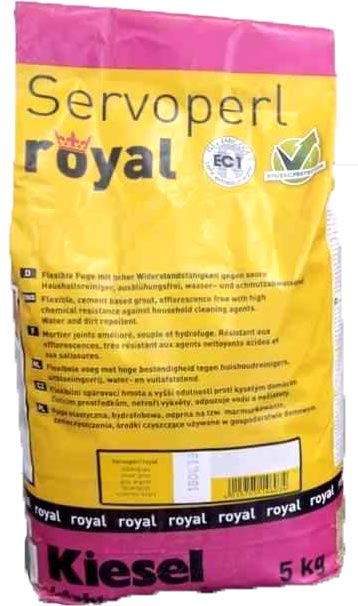

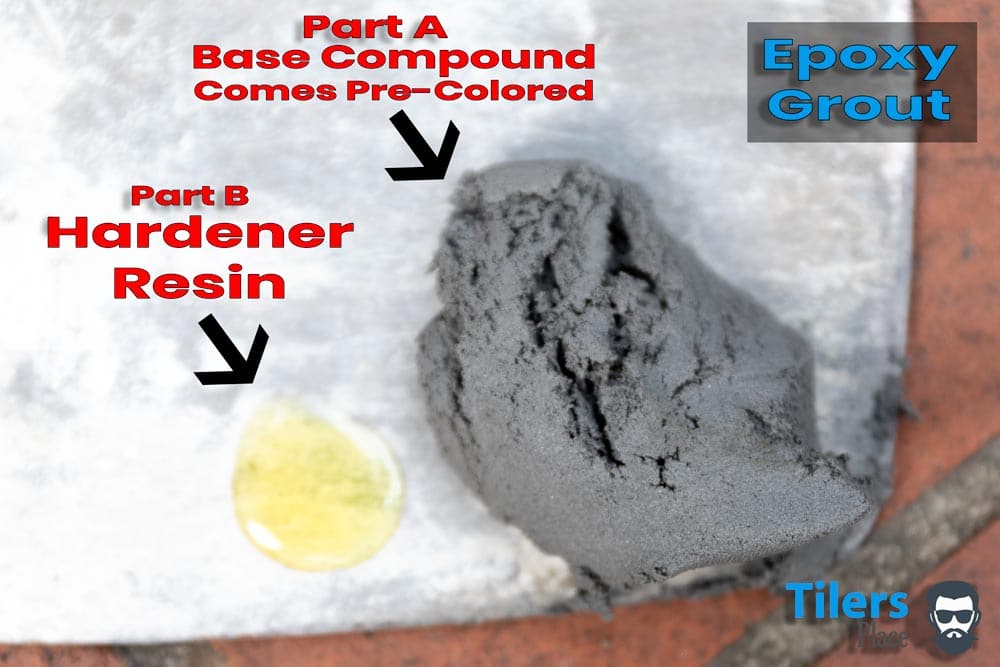
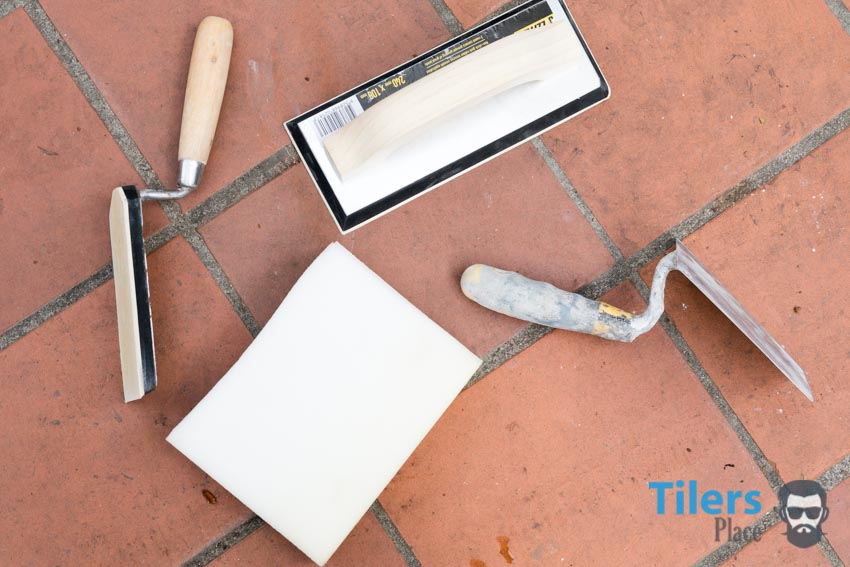
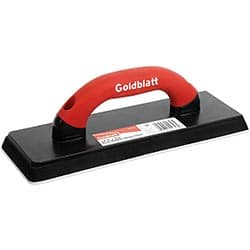
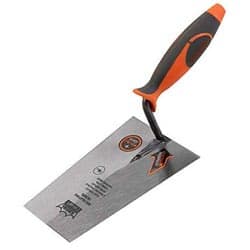
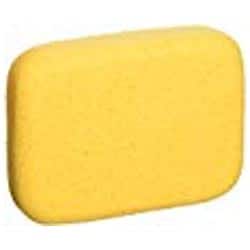

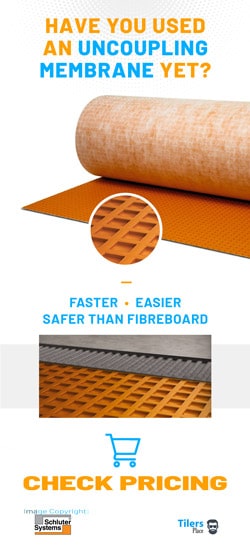


Carl – what grout would you recommend for an outdoor wood burning sauna with 4 inch tiles…approx. 350 cu ft.?
Hi David,
If the grout lines are smaller than 1/4″ (6 mm), you can use an unsanded grout that will provider a smoother finish. If the grout lines are thicker, you’ll need a sanded grout. You can use the same brand of grout that made the thinset you used. Avoid any of those ready to use grouts as they won’t be as effective outdoors.
Thanks for the question.
Hi Carl – Appreciable article. What type of grout would you recommend for tiles on terrace exposed to both rain water and sun heat. I have come to know that epoxy grouts are likely to crack under heat.
Hi Anshuman,
Thanks for the question and visiting my little website.
Any modern grout will handle your outdoor conditions without any issue. The main question is the grout line size and your tile material.
If your grout lines are 1/8″ or smaller, use an unsanded grout.
For grout lines larger than 1/8″, use a sanded grout. If the tiles are polished porcelain or stone, remember that sanded grout may scratch their surface.
Please let me know if you have any further questions.